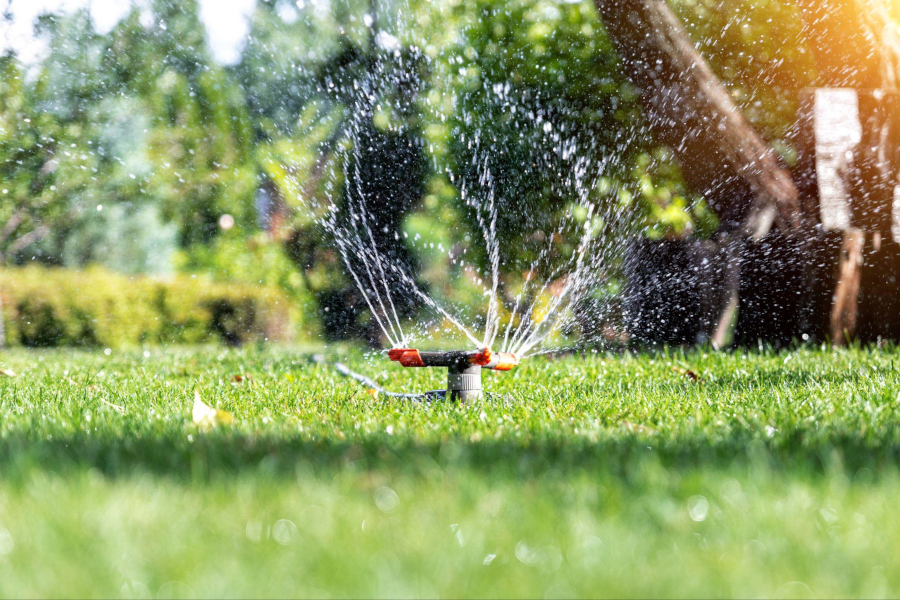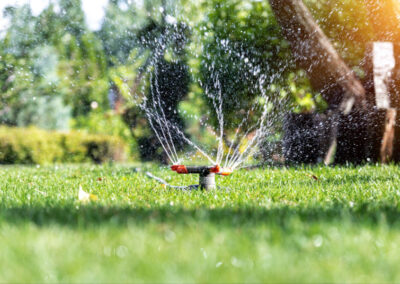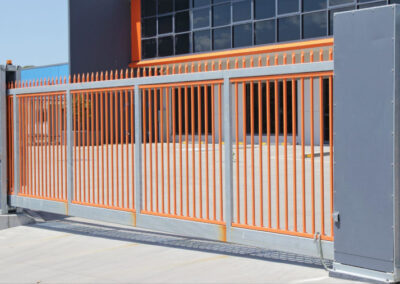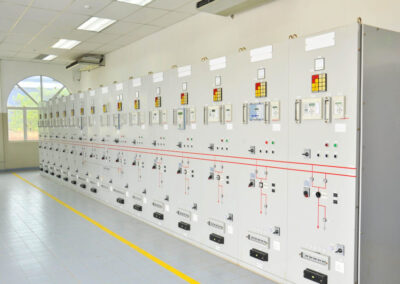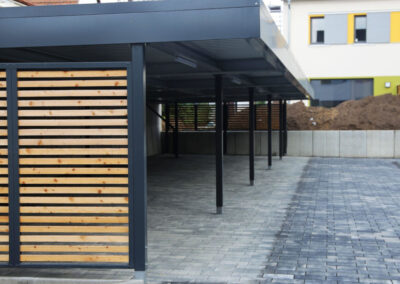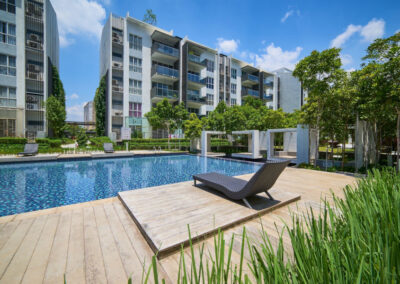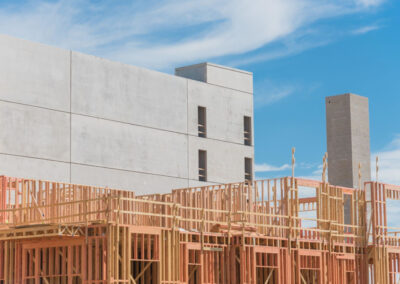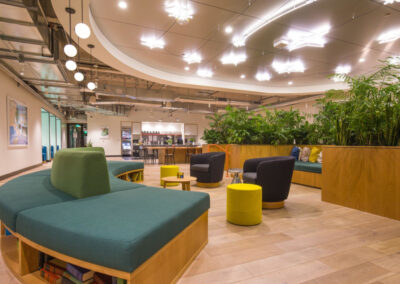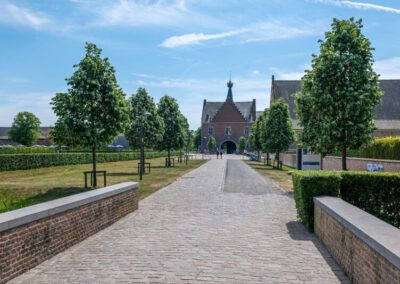Summary
Landscaping is the process of designing and creating a garden, or other open space, by planting, arranging and maintaining plants, trees and flowers.
Irrigation is the process of applying water to the soil to keep it moist so that plants can grow.
Landscaping is not just about planting trees, bushes and flowers in a garden but also about designing it with paths and other features. Irrigation is not just about watering plants but also making sure that they have enough water to grow. Landscape designers may use both landscaping and irrigation techniques when designing gardens or other outdoor spaces.
Landscaping and irrigation in buildings and commercial places is a key to improve the quality of life. It helps with the need for green spaces, while also helping to reduce waste, noise, smog, heat island effect, etc.
Uses
Air quality: Landscaping also improves air quality by reducing dust particles. It also helps to reduce noise levels by providing natural sound barriers.
Aesthetics: With the help of landscaping and irrigation, a person can create an aesthetically pleasing atmosphere which is more relaxing for the people who work or live there.
Natural Sound Barrier: Landscaping and irrigation in buildings are important to reduce noise levels.
Dust Reduction: Landscaping also helps to reduce dust particle pollution by providing natural resources.
Types
The main types of landscaping in outdoor places and buildings include:
Formal gardens: These are designed to create an impression of a formal garden. They usually have a mix of flowers, trees, shrubs and lawns.
Informal gardens: These are less structured than formal gardens with more natural plantings like meadows or prairies.
Wildflower gardens: These use native plants to create wildflower meadows or prairies without any cultivated plants or lawns.
Naturalistic landscapes: These try to imitate a natural landscape.
Gardens with a theme: These are arranged in the form of a geometric pattern or arrangement of plants that portrays an idea, such as Victorian gardens.
Small gardens: Some people have small gardens that can be laid out in different parts of the yard. They may be for sitting, for sunbathing or simply to grow fruits and vegetables .
Borders: A border is a strip of trees, shrubs, flowers or grass that distinguishes one area from another and separates it from other areas. Borders may be formal or informal.
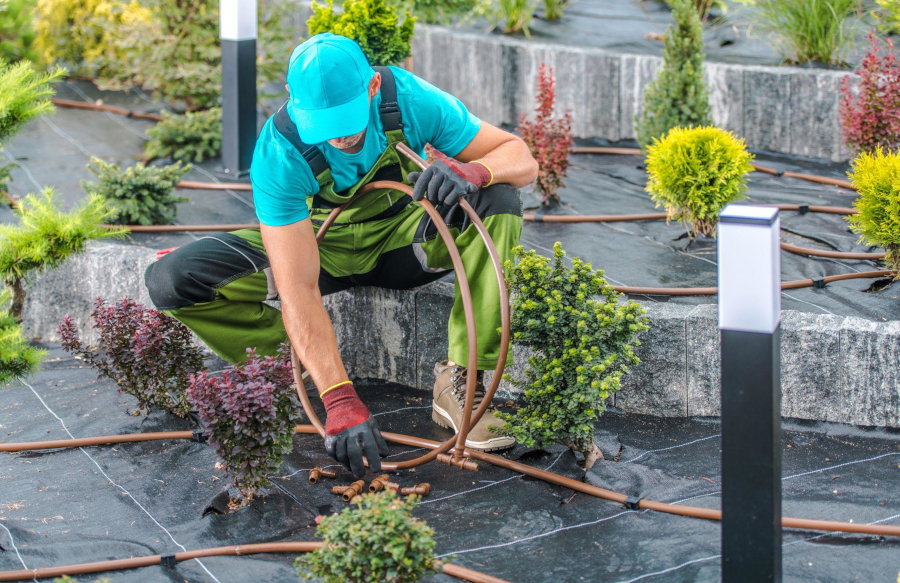
Materials
Some common materials used in landscaping and irrigation are:
Soil: Soil is the most important part of landscaping. It provides a base for all other plants to grow on and it is also necessary for the growth of healthy plants.
Mulch: Mulch is a type of soil that has been processed into smaller pieces (usually by grinding) which can be spread over the soil to protect it from moisture loss or erosion.
Fertilizer: Fertilizer helps to make sure that plants have nutrients in order to grow healthy.
Compost: Compost is made up of organic materials such as leaves, grass , and other decaying matter. It can be used as fertilizer or mulch around plants.
Mulch: Mulch is made up of decayed leaves and other organic material that has been spread on the ground for the purpose of keeping in moisture, protecting the ground from erosion, and to maintain a garden’s appearance.
Sprinklers: Sprinklers are used to water plants close enough to the water source. They are not efficient at this task, but are convenient and easy to use. The difference between these two processes is that mulching leaves decays and breaks down in the soil over time, whereas sprinklers quickly spray water on the surface of the soil. There is much less decomposition when using a mulch versus a sprinkler.
Costs
The cost for landscaping and irrigation starts at around $5 per square foot with a traditional installation. It can go up to $200 per square foot for a high-end installation.
Landscaping and irrigation costs can range from $200-$3,000 per month. The average cost for a service is $400-$600 per month. This price includes things such as lawn care, yard maintenance, fertilizing, weed control, mowing, planting trees and flowers that are native to your area..
Citations
https://www.sposatoirrigation.com/4-types-of-landscape-irrigation/
https://www.epa.gov/sites/default/files/
https://www.forbes.com/advisor/home-improvement/landscaping-cost/
https://homeguide.com/costs/landscaping-costs
https://newenglandenterprises.com/materials-you-need-for-landscaping/

